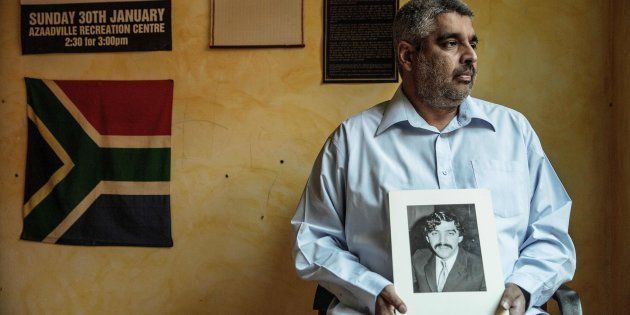
The story of Ahmed Timol's ["Timol"] brutal death at the hands of members of the South African Police's [SAP] notorious Security Branch [SB] did not begin with an impromptu road block on Fuel Street, Coronationville in Johannesburg on the night of 22 October 1971.
It's roots can be traced to the beginnings of the Apartheid system itself and its pathological obsession with race. This system did not tolerate any serious dissent and crushed those who would stand up to it.
There were many men and women of all races, young and old, who stood up to this pernicious system. They did so notwithstanding the considerable risks to themselves. Ahmed Timol was one of many who stood up to the formidable machinery of the Apartheid State. To the most, this machinery must have been seen as all powerful and invincible.
The Stormtroopers of the Apartheid State was the hated Security Branch. The SB, acting under the instruction and blessing of their political overlords, targeted those like Timol who questioned the legitimacy of the entire system. They did not hesitate to brutalize, and where necessary, to murder in an attempt to stem the tide of freedom.
Some 21 detainees died in security detention before Ahmed Timol died and by the time of the demise of Apartheid that figure would climb to 89. Eight of them perished in John Vorster Square [JVS]. Thirty-three were alleged suicides. Six involved falls from buildings or down stairs.
With the reopening of this inquest, the National Prosecuting Authority has a wonderful opportunity to start afresh.
Ahmed Timol would pay the ultimate price for standing up to Apartheid. In so doing he joined the illustrious ranks of Steve Biko, Griffiths and Victoria Mxenge, Neil Aggett, Babla Saloojee, Fabian and Florence Ribeiro and others. These names will be forever remembered and cherished by South Africans. The names of their tormentors will live on, but only in ignominy.
The Timol story is also a story of great injustice. It is a story of how dark forces were able to cover up crimes of torture and murder for some 46 years. It is the story of unbridled brutality meted out to young men and women held on the 10 floor of John Vorster Square.
It is the story of ugly collusion between police officers, who were meant to uphold law and order, but instead who cover up crimes of torture and murder. It is the story of a Magistrate, his assessor and a senior public prosecutor engaging in a charade of justice, happily playing their part in suppressing the truth –- and providing the imprimatur of legitimacy to the murderous conduct of the police.
It is sad, also a shameful story of great neglect, as the authorities in our new democratic order failed or declined to take action while the key suspects were still alive. This was an inexcusable lapse. It regrettably points to a design on the part of the authorities to permit the perpetrators of the past to avoid a reckoning with the truth, and escape justice.
With the reopening of this inquest, the National Prosecuting Authority has a wonderful opportunity to start afresh and to respond to the pleas of long suffering families of apartheid-era victims searching for answers and justice.
They will have us believe that Timol was treated with care and compassion by the SB, just like one of their own children.
The Timol story is also a story of great inspiration and perseverance. The Timol family, in particular, Ahmed Timol's nephew and brother, Imtiaz Cajee and Mohammad Timol, refused to let go of their quest for truth and justice. Their resolve and determination have been rewarded with an inquest before the High Court of South Africa.
For the first time in 46 years, there has been a serious investigation into the circumstances of Ahmed Timol's demise. As far as humanly possible each aspect of the case has been closely scrutinised. This Court has permitted the family the latitude to explore the full truth and for that, they are deeply grateful.
The family extended an open hand to the surviving police witnesses. They went on record to say that they are only interested in the full truth. They sought no vengeance or retribution. If the full truth was disclosed they would not seek a prosecution on any charge.
This plea was spurned by the police witnesses. They doggedly stuck to the hymn sheets concocted by their masters decades ago. The police version, largely adopted by the first Inquest Court, asks us to suspend our belief in reality.
- They will have us believe that the Security Branch did not carry out torture;
- They will have us believe that they only heard about torture through wild claims made in the media;
- They will have us believe that Timol was treated with care and compassion by the SB, just like one of their own children;
- They will have us believe that Timol's interrogators were honest and fair men;
- They will have us believe that Timol would have preferred death to a long prison sentence;
- They will have us believe that they did what they could for the critically injured Timol;
- They will have us believe that the police carried out a rigorous and methodical investigation in reaching the conclusion that nobody was to blame.
None of it is believable. None of it bears any relationship to the truth. In the circumstances, the Timol family seeks justice against the police witnesses who continue to perpetrate the cover up of the crimes committed against Timol.
